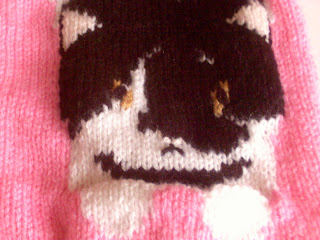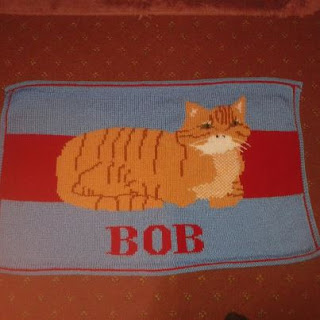This post is a brief interlude in
the description of the progress of the WW1 Memorial Quilt. A few weeks ago I managed to finish the
little cardigan that I was knitting.
This small garment seemed to take ages.
I am not completely happy with the finished result – in places my
tension was terrible (I am not showing you that bit!).
The brief for this project was a
cardigan with a cat on it – and I decided to base the design on the family cat
who is called Cheeky. I read somewhere
that there are over 900 different breeds of dog. I don’t think there are that many breeds of
cat but it seems to me that no two cats look alike. Unlike dogs they are mostly a similar size
and shape but their markings can be totally different.
I have knitted a cat previously –
I knitted Bob the famous Street Cat. The
photograph below was taken by Tina Clark who is a fan of Bob and the owner of
Cheeky.
As with black and white cats – no
two ginger ones seem to look the same either.
I remember when I was choosing
yarn for this project – I couldn’t find the right shades of orange. In that respect a black and white cat is
easier.
I am often working on several
items or garments at the same time and if I wrote posts about what I was
knitting today – they would be very disjointed – well more disjointed than
usual – so I try to gather my thoughts on one item at a time. The downside of this approach is that I
forget the problems. I know when I
knitted the black and white cat – I had drawn the face out on graph paper but
then I knitted something else! Graph
paper is all very well for a general outline but then I find it easier to
design on the needles. I am trying not to
do this with my Memorial Quilt but sometimes I still do.







